
Dialysis Fully-Automated System (D-FAS)
Bringing nursing staff back to patient care.
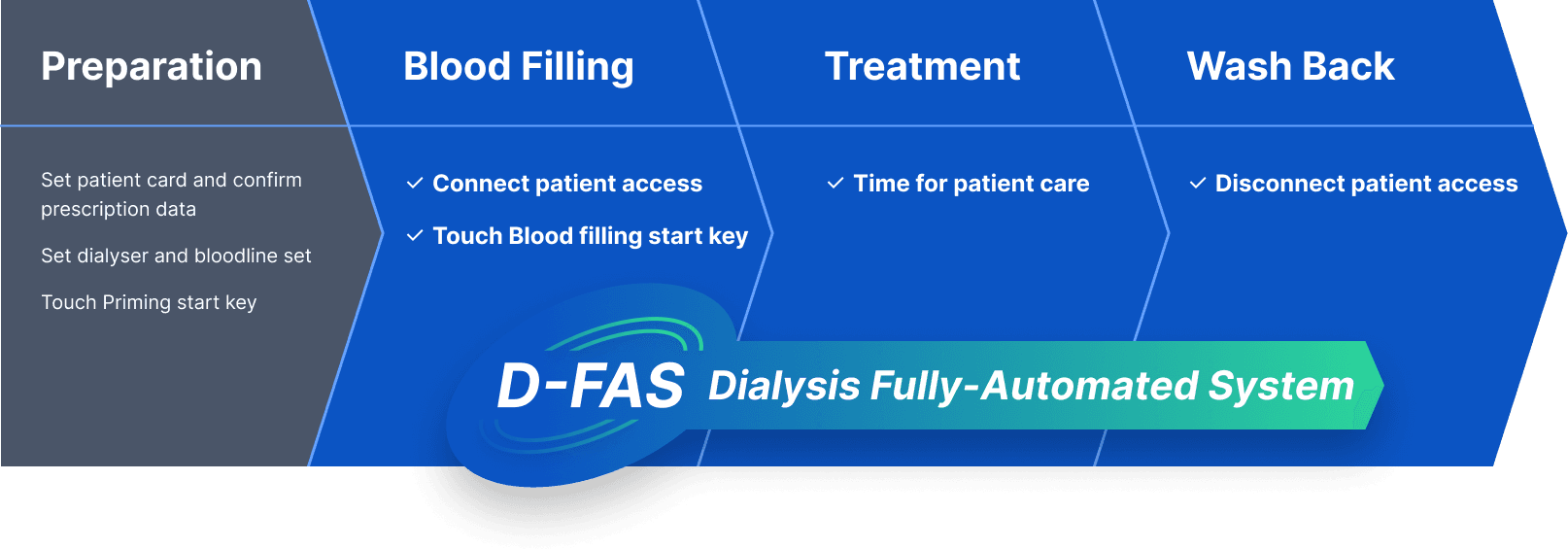
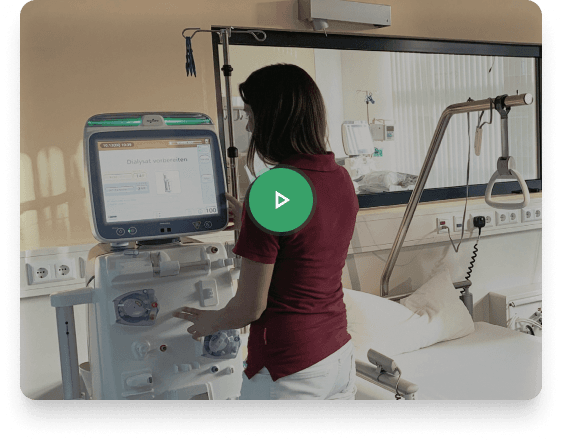
Advantages
- Reducing standard operational tasks between treatments such as preparation, connecting and disconnecting patients.
- Minimising the number of times the operator has to interact with DBB-EXA.
- Simplifying and automating the tasks to reduce operator errors and risks of contamination.
- Dialysis facility can select automatic priming, wash back and emergency bolus utilising dialysis fluid or saline (based on the facilities policy).
- Automatic wash back solution can be switched from dialysis fluid to saline. The operator can keep the standard wash back procedure even if the power supply is interrupted.
- D-FAS blood filling removes the priming solution automatically through the dialyser. Patient UF removal can be minimized.

“Bringing nursing staff back to patient care.”
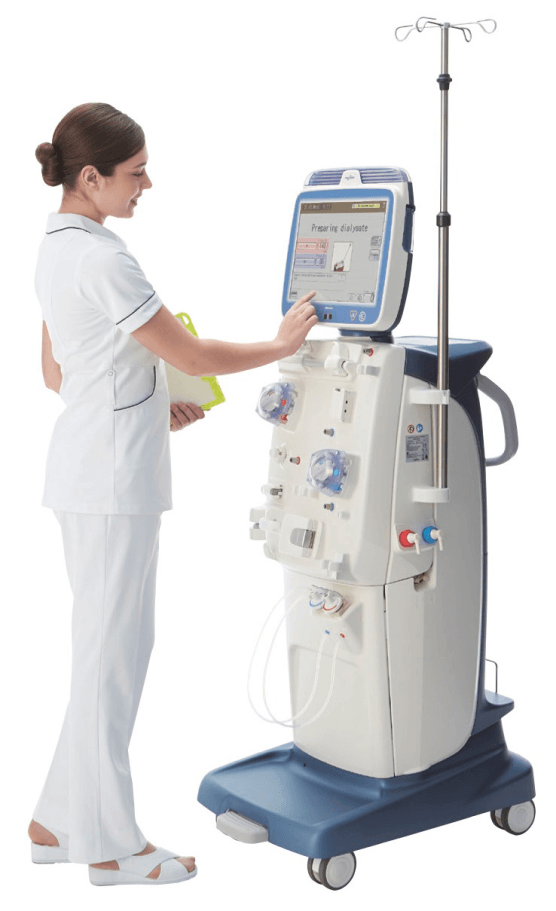
D-FAS is a powerful tool that can help you save time and reduce your workload. With D-FAS, you can automate many of your tasks, freeing you up to focus on more important things.
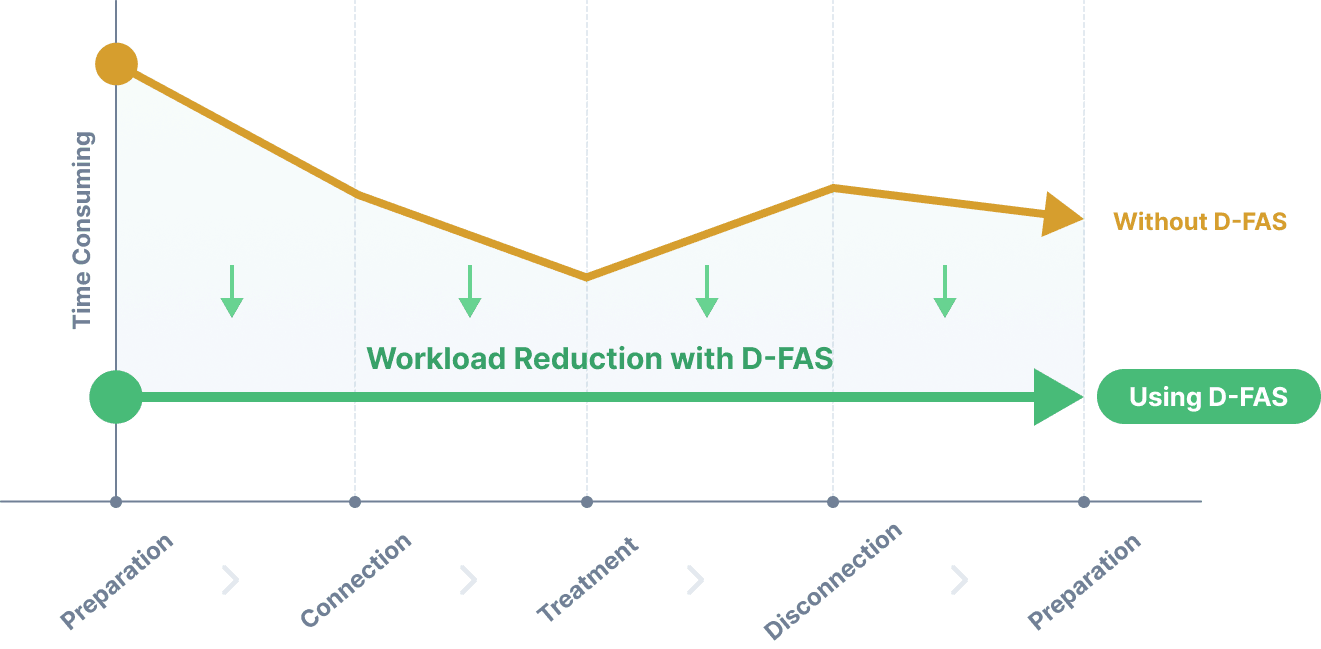
User-friendly interface
The user-friendly interface has operational guidance with intuitive graphical instructions. The interface is designed to simplify the operation. Using D-FAS and patient card, the number of screens and key strokes is minimised. Displayed information can be customized individually to fulfil all the dialysis facilities requirements.
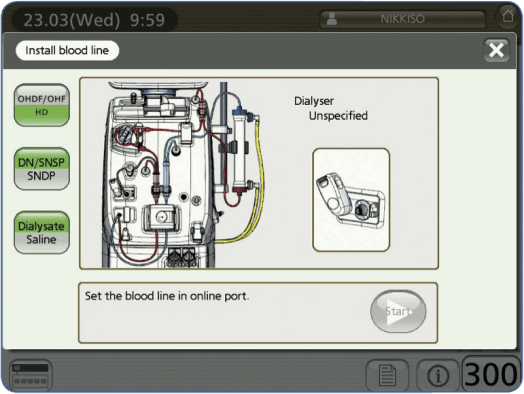
Preparation screen
Intuitive guidance to set up bloodline set.

Prescription screen
Prescription screen Minimum information for simplified operation.
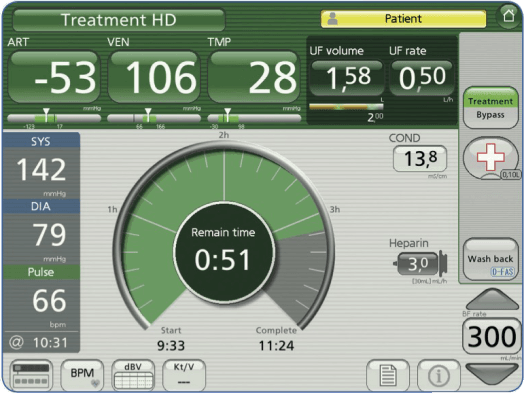
Basic screen during a treatment
Monitors and keys are customizable.
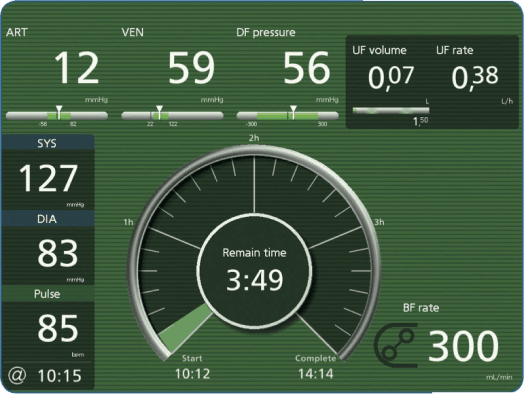
Screensaver
Informative screensaver Improved legibility from a distance.
Smart Design
Prescription screen Minimum information for
simplified operation.
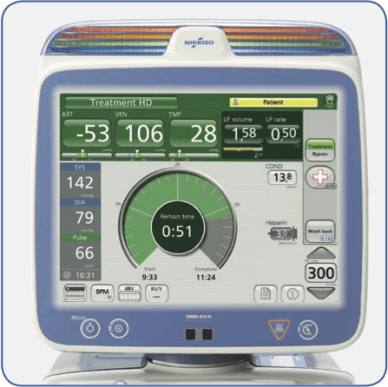
15 inch flat touch screen with wide viewing angle. 4 colored status display on top of the screen visible from any angle.
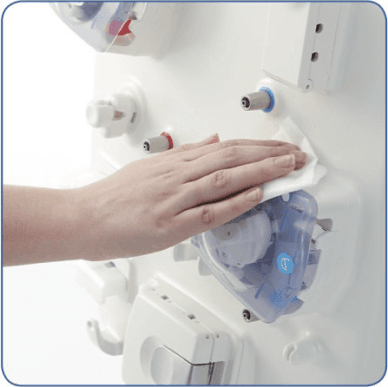
Smooth curved surfaces allowing for easy cleaning.
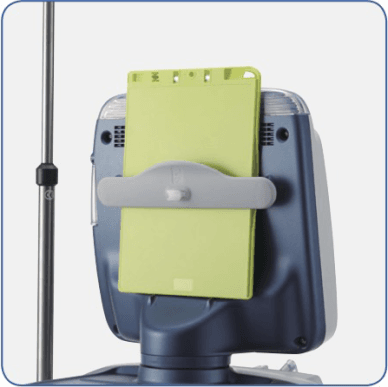
Integrated document holder keeping patients area neat and tidy.
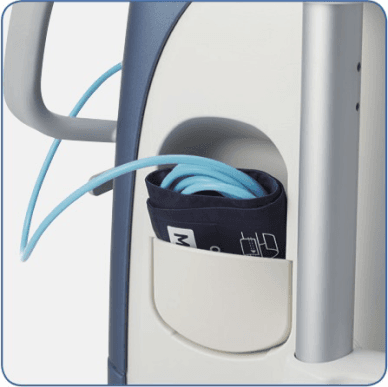
The blood pressure monitor cuff holder with detachable flap for ease of cleaning.
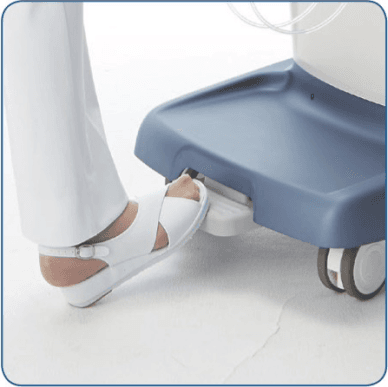
Simple and easy brake pedal, enabling locking of all 4 wheels.
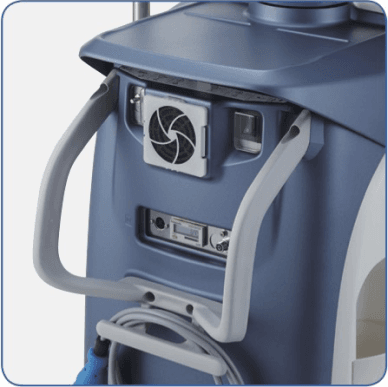
Grip handle with integrated cable hook for ease of maneuverability.

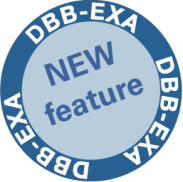
Interface hub for connecting network and various alarm in- and outputs. Also available is the unique Publicly Available Specification connection port for external alarming device (IEC PAS 63023).
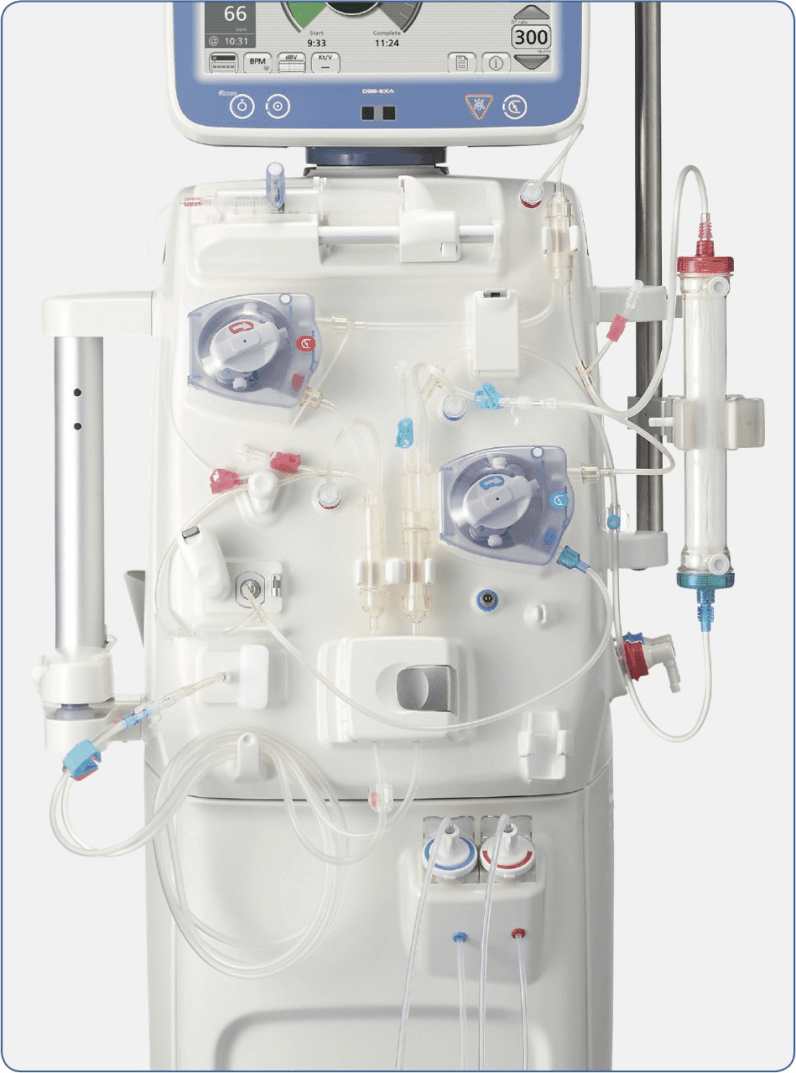
A well laid-out extracorporeal circuit minimises patient extracorporeal blood volume and makes it easy to install the bloodline set.
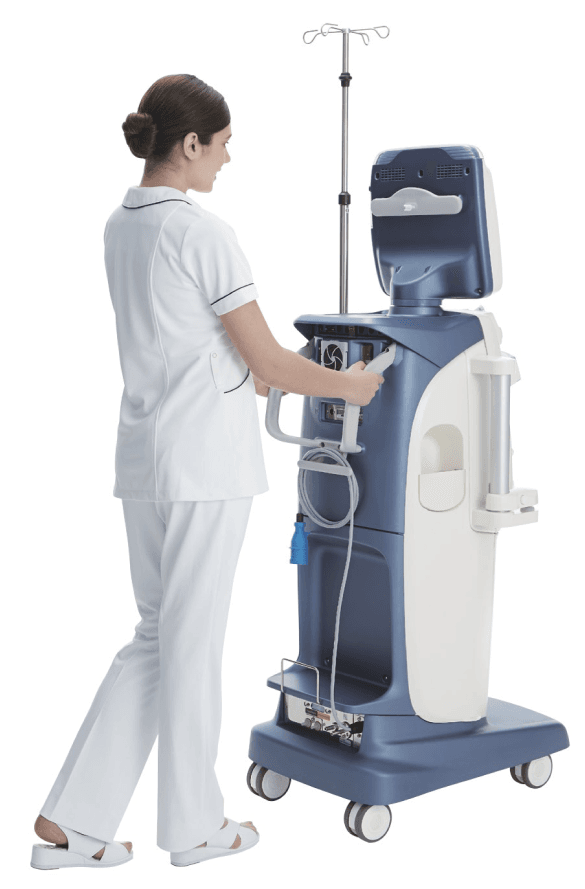
Patient card
Bi-directional Patient Card – Stand-alone data management solution
EASY-FAST-FLEXIBLE (without network system)
The prescription data can be imported to the DBB-EXA via the personal patient card, easily and fast, and without any cable connection. At the end of the treatment, the last 3 treatments are available on the contactless (RFID technology) patient card as a data package for export to the data management system. Not requiring any data cable installation throughout the dialysis centre, this flexible stand-alone solution from NIKKISO offers a simple, fully autonomous and maintenance-free data management.
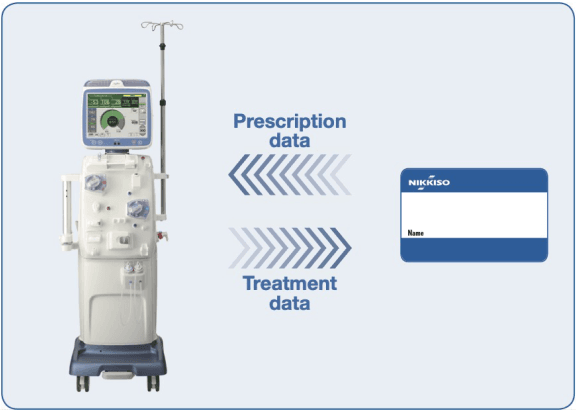
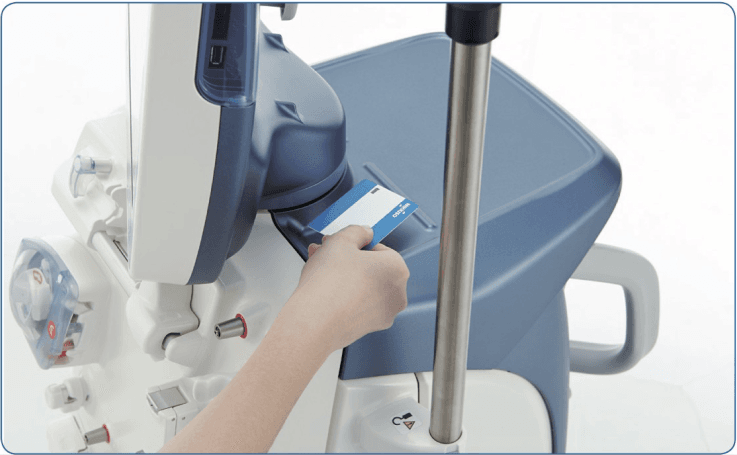
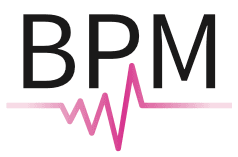
Blood Pressure Monitor (BPM) with UF reduction
DBB-EXA can measure the blood pressure with the integrated BPM. Measurement timing can be selected from manual, auto measurement or continuous. Results are displayed in graphical form and the UF rate ,the blood flow rate can be reduced automatically when it reaches a preset limit.
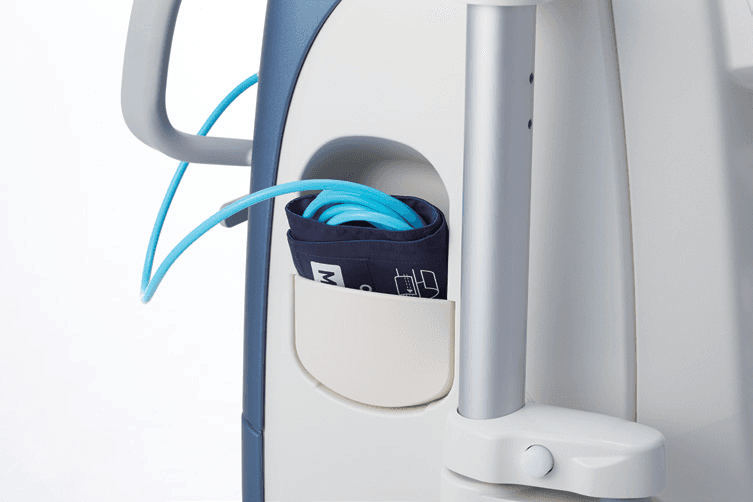
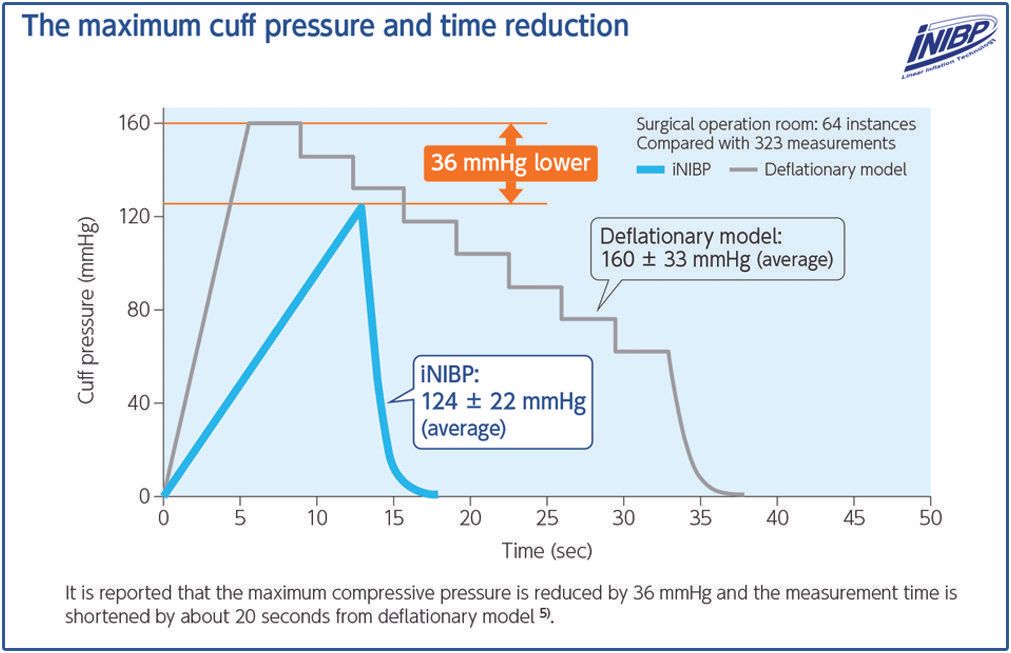
Advantages of BPM and Haemo-Master
- Integrated, easy to handle
- No additional costs for disposables
- BPM with automatic UF reduction
- Continuous Blood Volume Monitoring
- Automatic regulation of the UF rate and dialysis fluid conductivity
Blood Volume Monitor (BVM) and Plasma Refilling Rate (PRR)
The BVM module transmits light near the infrared spectrum through the bloodline. This light with a specific wavelength is reflected by the red blood cells and the intensity of reflection is measured. Patient blood volume and blood cell concentration in the arterial bloodline are correlated. Haemo-Master observes the change
of reflected light during the treatment and a change of patient blood volume (dBV) can be monitored continuously.
Blood volume measurement is considered as a useful tool to help improve tolerance and the haemodynamic response [3]. Estimated patient PRR is calculated from UF rate and dBV trend.
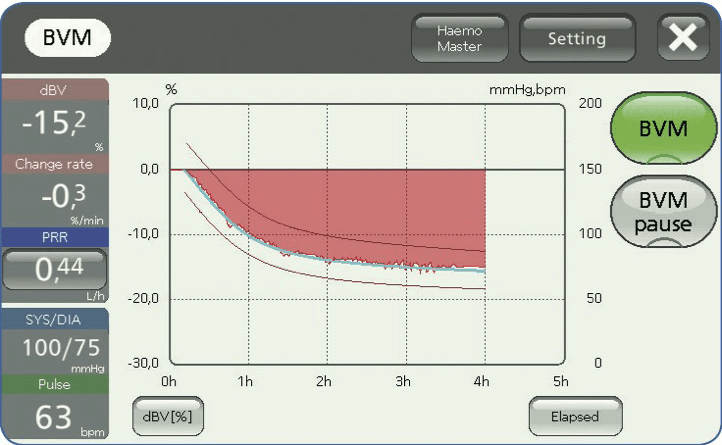

Haemo-Master observes the change of reflected light during the treatment and a change of patient blood volume (dBV) can be monitored continuously. Blood volume measurement is considered as a useful tool to help improve tolerance and the haemodynamic response [3]. Estimated patient PRR is calculated from UF rate and dBV trend. Nephrologists can refer to the PRR to help estimate adequate UF rate to stabilise the dBV. The monitored dBV and PRR are displayed in graphical form and clinicians can observe the patient fluid status visually.
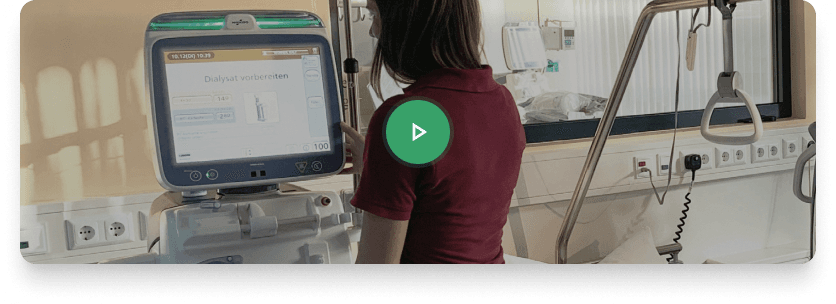
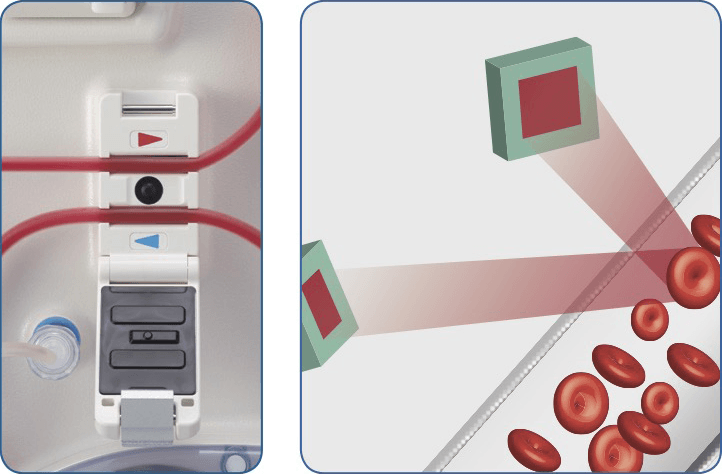
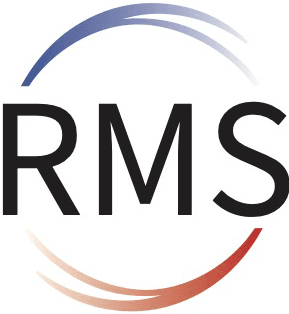
Recirculation Measurement System
The vascular access is the link between the patient and the extracorporeal blood circuit. Since the effectiveness of dialysis treatment depends, among other things, on the amount of purified blood, vascular access can be considered as the patient’s lifeline, to which special attention should be paid.
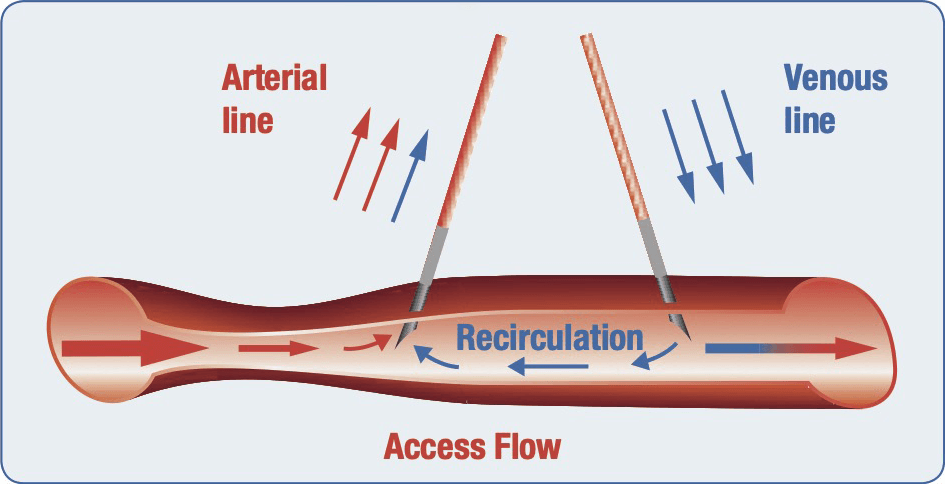
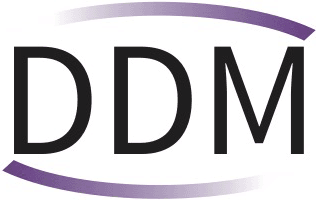
Dialysis Dose Monitor
Positive long-term prognosis & higher quality of life for your patients! Several studies have proven that a positive long-term prognosis and improved quality of life (QOL) of patients depends on the actual delivery of dialysis dose. Adequate dialysis dose may improve QOL [7-9].
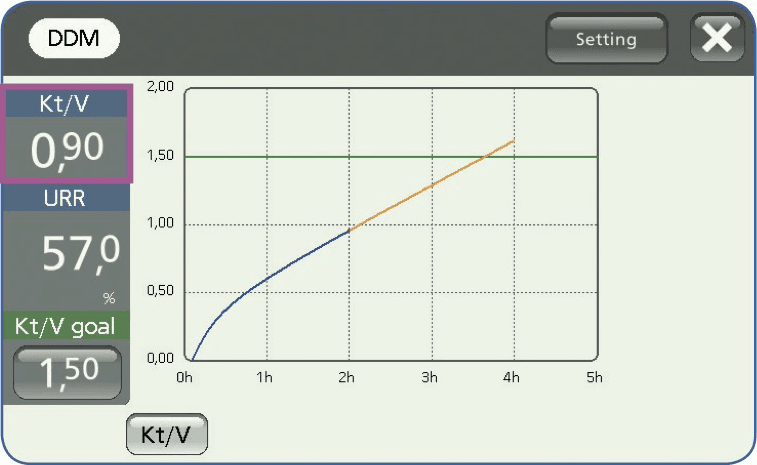
Measurement principle of the DDM
A sensor located directly in the spent dialysis fluid measures the absorbance at a wavelength which directly correlates with patient blood urea nitrogen (BUN) concentration. The continuously measured values are inserted in the formulas for single pool Kt/V (spKt/V) and urea reduction ratio (URR) and the results are immediately displayed.


A sensor located directly in the spent dialysis fluid measures the absorbance at a wavelength which directly correlates with patient blood urea nitrogen (BUN) concentration. The continuously measured values are inserted in the formulas for single pool Kt/V (spKt/V) and urea reduction ratio (URR) and the results are immediately displayed.

ช่องทางการติดต่อ
บริษัท นิคคิโซ เมดิคัล (ประเทศไทย) จำกัด 689 ถนนอ่อนนุช แขวงอ่อนนุช เขตสวนหลวง กรุงเทพมหานคร 10250
โทร (02) 716 2894, 742 5618 แฟกซ์ (02) 716 2895
ติดตามข่าวสารผ่านสื่อออนไลน์